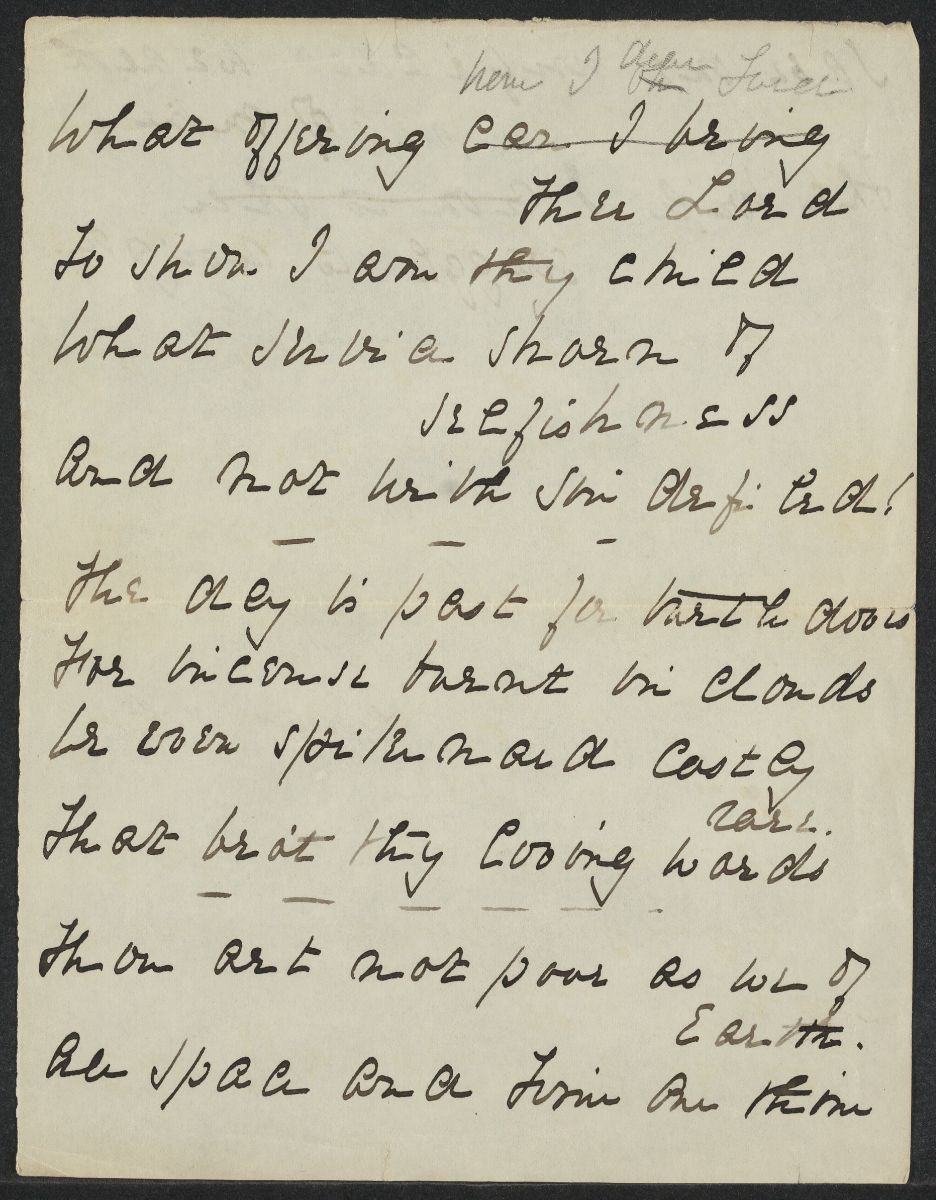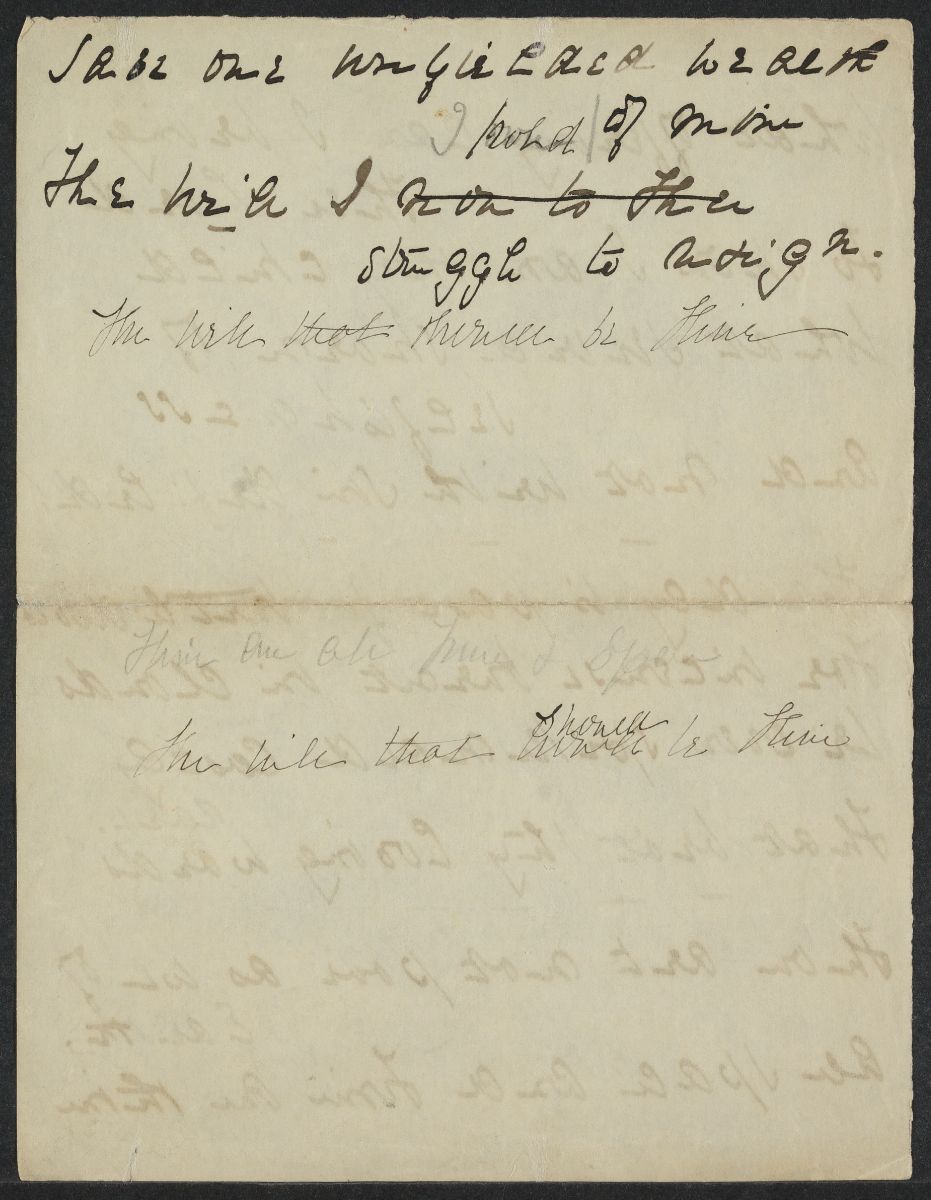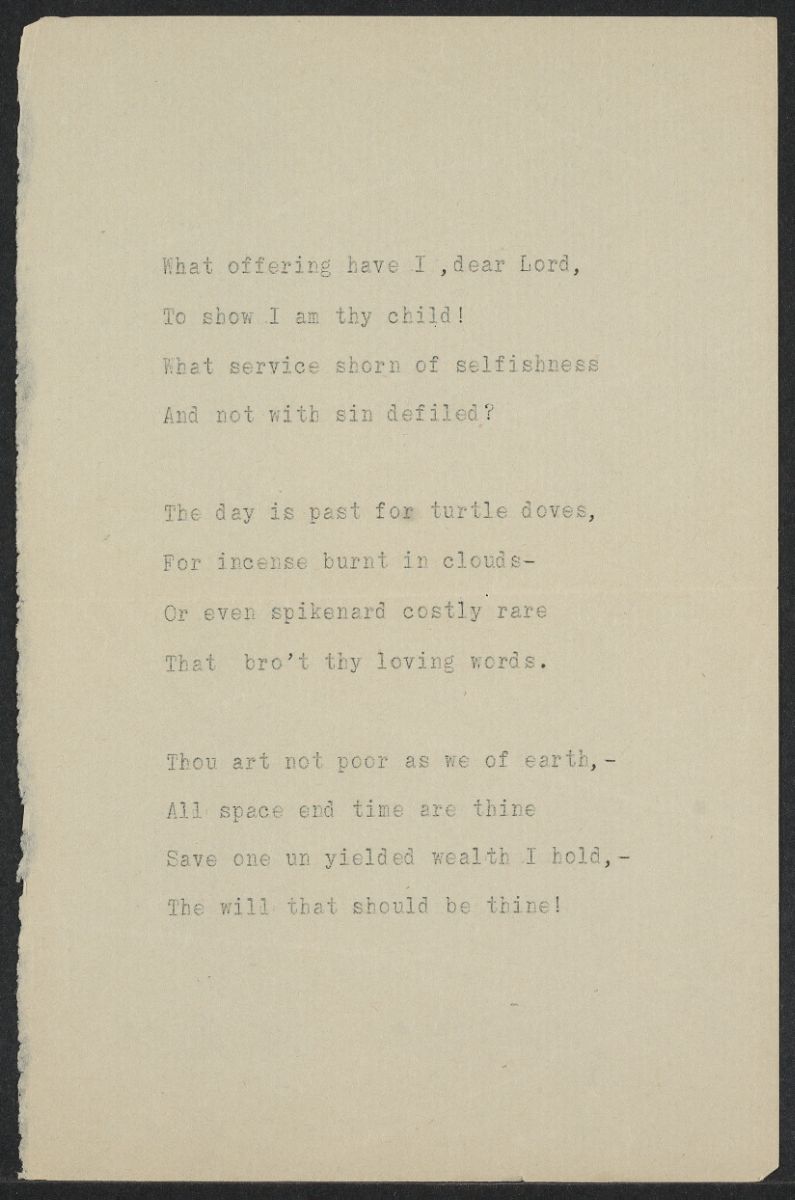<< Return to Poems
What offering have I dear Lord
< transcription 1, transcription 2, transcription 3 >
Notes
H bMS Am 1118.95, Box 9
C.1884; in the hand of "Hyssop". Ink, with pencil revisions. Typescript also. It's likely that this traditional hymn was prepared for print. Compare with "Valentine’s Day" and "Irony". This constellation of poems testifies to a poetic process through which Susan formalizes her poetry, even translates her poetry from manuscript with print and its prosody rules in mind.
As Emily’s holograph poetics demonstrates, the medium, its mode of transmission and anticipated audience influence and alter the poem’s form and content. Note in particular Susan’s addition of end-stop punctuation in this and other typescript translations.
Unique to the surviving corpus, the poem represents Susan’s only conventional religious poem. Though in general her verse is less stylized than popular printed poetry, this piece goes largely undistinguished by comparison except for its abbreviated length and uncomplicated delivery. Also, the turn at the end demonstrates a sophisticated handling of the material, withholding as it does the speaker’s dilemma until the poems’ conclusion when she offers, as Emily frequently did, a partially "veiled" wisdom or insight into the speaker that is suggestive of more.
Traditional and contemporary analogs for her poem would have included passages from the Common Book of Prayer and devotional poems collected in volumes such as Sacred Poets of England and America, which Susan owned.
As this and other poems of her corpus demonstrate, Susan is a consistent lyricist, committed to the rhythmic integrity of her poems; this particular hymn is accentually and syllabically exact. In keeping with the practice of other, later poems, Susan’s rhymes are more subtle and distinguished, as in the slant rhyme "clouds"/ "words" and the "mirror" rhyme of "thine"/ "thine".






